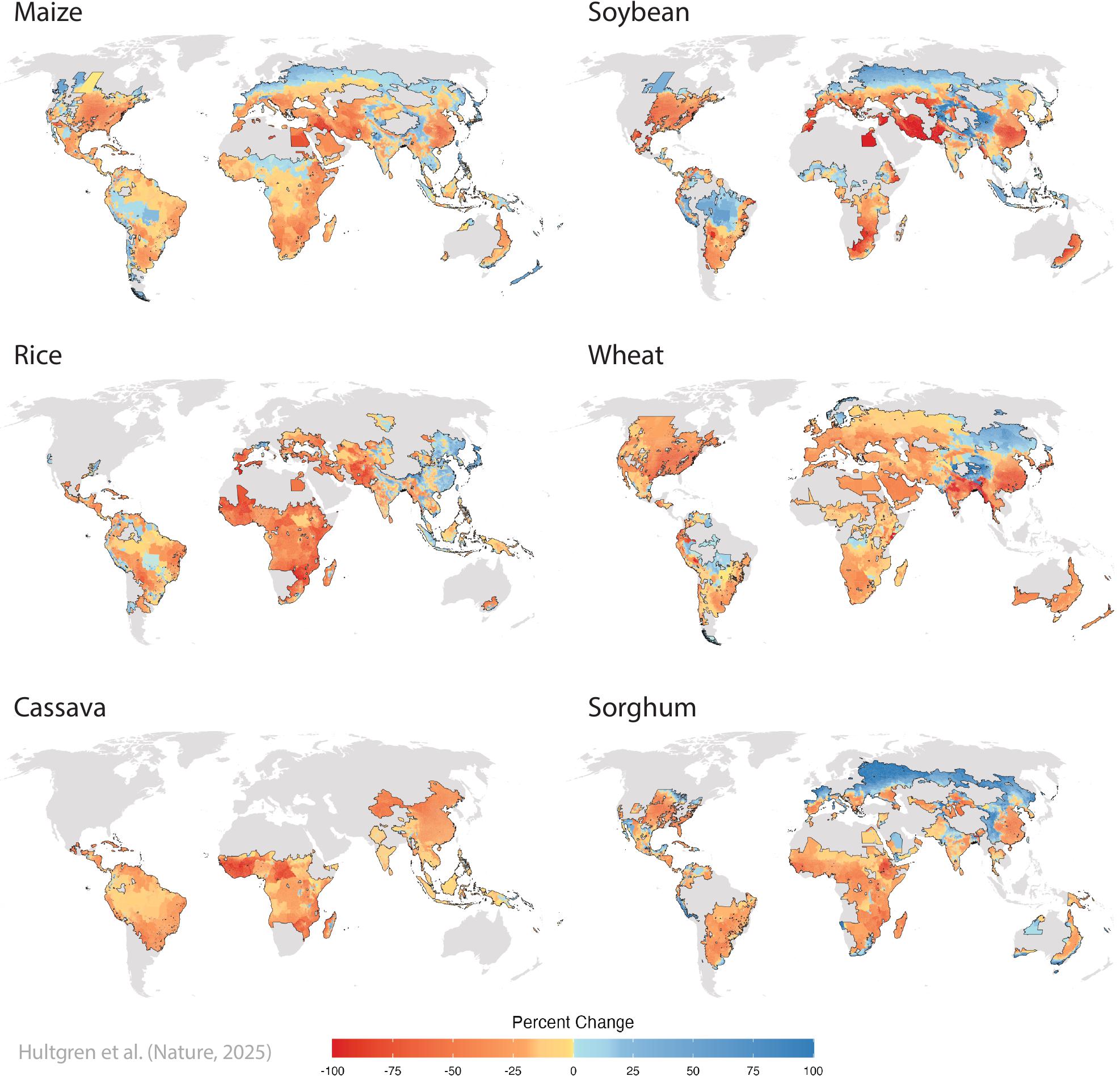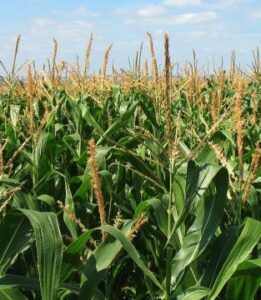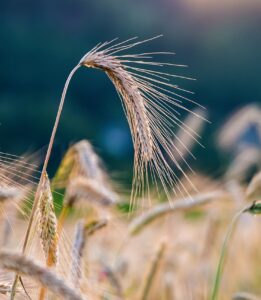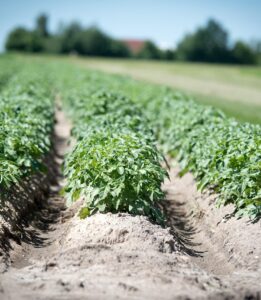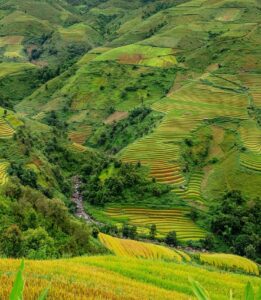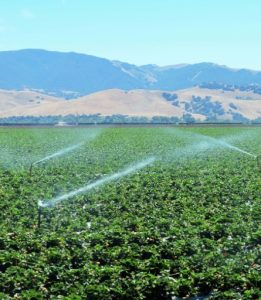Abstract
Climate change threatens global food systems, but the extent to which adaptation will reduce losses remains unknown and controversial. Even within the well-studied context of US agriculture, some analyses argue that adaptation will be widespread and climate damages small, whereas others conclude that adaptation will be limited and losses severe. Scenario-based analyses indicate that adaptation should have notable consequences on global agricultural productivity, but there has been no systematic study of how extensively real-world producers actually adapt at the global scale.
Here we empirically estimate the impact of global producer adaptations using longitudinal data on six staple crops spanning 12,658 regions, capturing two-thirds of global crop calories. We estimate that global production declines 5.5 × 10¹⁴ kcal annually per 1 °C global mean surface temperature (GMST) rise (4.4% of present production or 120 kcal per person per day per 1 °C; P < 0.001). We project that adaptation and income growth alleviate 23% of global losses in 2050 and 34% at the end of the century (6% and 12%, respectively; moderate-emissions scenario), but substantial residual losses remain for all staples except rice.
In contrast to analyses of other outcomes that project the greatest damages to the global poor, we find that global impacts are dominated by losses to modern-day breadbaskets with favourable climates and limited present adaptation, although losses in low-income regions are also substantial. These results indicate a scale of innovation, cropland expansion or further adaptation that might be necessary to ensure food security in a changing climate.
Research Highlights
Context
Climate change will lead to changes in the weather across the globe, with some places getting hotter or wetter, and others cooler or drier. These changes will, in turn, lead to changes in agricultural systems. Farmers will use the resources available to them to take steps to adapt, like adjusting fertilizers, changing the varietals of a given crop they plant, or cultivating crops earlier or later. But will these adaptations be enough to compensate for climate impacts on crops?
Research Design
This study measures the effect of climate change on six staple crops—corn, soybean, rice, wheat, cassava and sorghum—assembling data spanning more than 12,600 regions in 54 countries, now the largest publicly available dataset of global subnational crop yields. This dataset captures two-thirds of global crop calories and encompasses diverse local climates and socioeconomic contexts, making it globally representative. The researchers simultaneously measure 1) crop production in response to climate change, 2) the degree to which farmers take steps to adapt in response to weather events, and 3) the effectiveness of those adaptations. Previous studies often focused on process-based models that simulate how crops respond to weather conditions, but they relied on assumptions about how producers adapt—often ignoring real-world decision-making. This study addresses that gap by empirically measuring global farmer adaptations. The researchers’ approach assumes that farmers facing similar climates with comparable incomes and irrigation infrastructure tend to make similar management decisions, which allows the researchers to estimate the effects of unobserved farmer decisions such as adaptation. They then apply their results to project climate impacts on crop yields globally.
Findings
Climate change is set to reduce food supply globally.
On average, global production of the six staple crops declines by 4.4 percent of present recommended consumption annually for every 1° C of warming—equivalent to a loss of 120 kilocalories per person per day. Under a very high emissions scenario of 4° C (RCP 8.5), this translates to a potential 17.2 percent drop in per capita food consumption by 2100.

Climate change’s impact on food production is unequal around the world—today’s richer, breadbasket regions experience the greatest losses, along with the poorest regions.
The impacts from climate change differ substantially by region depending on 1) how warm the region is now, 2) how much rain they can expect, and 3) the degree to which farmers have already started adapting. Modern- day breadbaskets—richer regions that currently have moderate temperatures and limited experience with adaptation—experience the greatest losses. Since these regions produce a large share of global calories, their losses under climate change will have an outsized impact on the global food supply. Overall, crop yields in in these regions could decline by up to 41 percent under a very high emissions scenario. As an example of the impact to the breadbasket regions, corn crop yields in the United States could decline by 45 percent—raising the question of whether the U.S. “corn belt” will disappear in the coming decades if climate change continues unchecked.
Hotter locations fare better because farmers there have already learned to adapt to the heat, so further warming has less impact. Furthermore, many hotter locations—being along the tropics—benefit from more rainfall and humidity. Yield losses in these lower- and moderate-income areas average around 18 percent under a very high emissions scenario. As an example of the moderate impact in these regions, losses to rice yields across southeast Asia are largely unimpacted by climate change. However, due to the high loss of cassava crops that are vital to the world’s poor, the poorest regions experience a 28 percent decline in yields under this scenario.
Notes
Corn: The grain belt of the United States, Eastern China, Central Asia, Southern Africa and the Middle East see the greatest impacts, with corn yields declining by about 40 percent by the end of the century under a scenario with unchecked climate change (very high emissions scenario). The impacts are more moderate in South America and Central Africa are more moderate, with losses of about 15 percent, mitigated in part by more rain over a longer period of time. While parts of northern Europe experience an increase in yields of as much as 10 percent, the Mediterranean sees losses of 40 percent.
Soybean: Soybean sees similar patterns, but the magnitudes are accentuated. For example, in the United States, soybean yields decline by about 50 percent, while in wet regions of Brazil, yields increase by about 20 percent.
Rice: There are net gains to rice globally, with mixed impacts on rice yields in India and Southeast Asia—where rice is primarily grown. This regional result is broadly consistent with earlier work showing rice benefits from warmer nights.
Wheat: Wheat losses are notably consistent across the main wheat-growing regions, with losses of 15 to 25 percent in Eastern and Western Europe, Africa and South America. China, Russia, the United States and Canada see greater declines of 30 to 40 percent. There are notable exceptions to these global patterns: wheat-growing regions of Western China exhibit both gains and losses, whereas wheat growing regions of Northern India exhibit some of the most severe projected losses across the globe.
Cassava: Climate change is projected to uniformly hurt cassava crops across nearly all regions in which it is currently grown. The largest losses, 40 percent, are in Sub-Saharan Africa. Although cassava does not make up a large portion of global agricultural revenues, it is an important subsistence crop in low-income and middle- income countries. Thus, climate change may pose a substantial future threat to the nutritional intake of the global poor.
Sorghum: Climate change is also projected to hurt sorghum crops in almost all of the main regions where it’s currently grown: 40 percent decline in North America (−40%), 10 percent decline in South Asia, and a 25 percent decline in Sub-Saharan Africa. Western Europe sees its sorghum yields improve by 28 percent, and in Northern China by 3 percent.
Farmers can’t entirely prevent climate impacts from hurting crops, but they can help reduce losses through adaptation measures.
Adaptation and income growth alleviate 23 percent of global losses in 2050 and 34 percent at the end of the century. Adaptation measures shield rice the most, reducing impacts by 79 percent in 2100, and have the smallest effect on wheat yields, which remain statistically unimpacted by steps to adapt. South America benefits the most from adaptation measures, with adaptation reducing climate change impacts on crop yields by 61 percent by the end of the century. Corn and soybean benefit the most. These findings underscore that adaptation, while helpful, cannot fully prevent crop losses.
The societal cost of future yield losses is estimated at $18 per ton of CO2 but could be significantly higher.
These agricultural damages can be incorporated into current climate policy by calculating the additional cost imposed by one more ton of CO2 emissions—a value known as the social cost of carbon. The researchers estimate that the partial social cost of carbon attributable to changes in global staple crop yields ranges from $0.99 to $49.48 per ton of CO2, depending on policy assumptions.
Closing Take-Away
The study is the first global analysis of climate change’s impact on staple crops to account for real-world adaptation measures taken by farmers around the world and to apply these measurements to projections of global agricultural damages from climate change. It finds: those with the most to lose, lose the most. The prosperous breadbaskets of the world, like the U.S. Midwest, face some of the most severe projected impacts, though impacts to the poorest regions of the world are also substantial. The researchers develop the first empirically-derived equation, known as a “damage function,” to link degrees of global temperature rise to global calorie production changes, finding losses from even small amounts of warming (Figure 1). The results indicate a need for innovation, cropland expansion and/or further adaptation to ensure food security in a changing climate.



